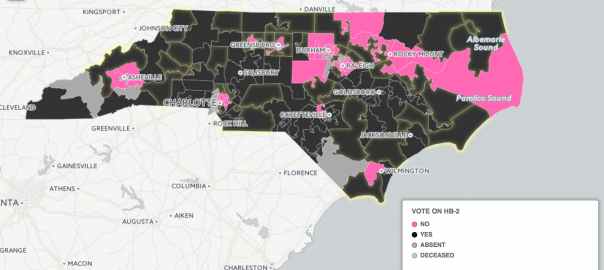After the house votes came down on HB2, I was curious to see the geography of the vote (which largely parallels the county-by-county vote on Amendment 1 from a few years ago), but also wanted to understand what it would take to elect a different set of representatives to the NC State House. Because of partisan re-districting, a large number of the NC House districts are non-competitive, and in fact at the filing deadline in December 2015, 29 House Republicans (and 28 Democrats) were running unopposed!
In addition to showing the HB2 vote breakdown, this map highlights in pale yellow outlines the districts where: (1) the representative voted for HB2, (2) the House member is running in 2016, and (3) their race in 2014 was reasonably competitive — meaning they got less than 70% of the 2014 vote. These are some of the districts where concerted electoral organizing has a shot at changing the make-up of the legislature next year.

